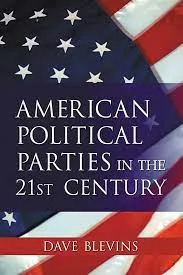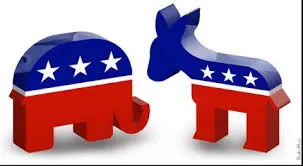
As the 21st century progresses, the political landscape is changing rapidly. With the rise of new technologies, the emergence of social media, and the increasing public demand for transparency, political parties are having to adapt to the changing times. This article will explore the future of political parties in the 21st century, looking at how they will need to evolve to remain relevant in a rapidly changing world.
We will consider how new technologies and digital innovations can be used to engage with the public more effectively, as well as the challenges that political parties will face in terms of data privacy and security.
How Political Parties are Adapting to the Changing 21st Century Landscape
The 21st century has brought with it a host of new challenges and opportunities for political parties across the world. No longer can political parties rely on the same strategies and tactics that worked in the past. In order to remain relevant and effective in the 21st century, political parties must adapt to the changing landscape.
One way political parties are adapting to the 21st century landscape is through the use of technology and social media. Social media platforms such as Twitter, Facebook, and YouTube give parties unprecedented access to potential supporters and voters. Parties can use these platforms to quickly and inexpensively reach a large number of people and spread their message. Parties can also use these platforms to engage with their supporters and solicit feedback. This has allowed parties to become more responsive and attentive to the needs of their constituents.

In addition, political parties are using data analytics to gain a better understanding of their supporters and the political landscape. Data analytics allow parties to identify potential voters, target specific demographics, and track the success of their campaigns. This allows parties to tailor their campaigns to the needs of their constituents and ensure they are reaching the right people.
Finally, political parties are creating more diverse and inclusive environments. Parties are actively recruiting individuals from different backgrounds and orientations, and creating policies that reflect their values. This not only allows parties to better represent the population, but also gives them access to new ideas and perspectives that can help them develop more effective strategies.
Political parties must continue to adapt to the changing 21st century landscape if they want to remain effective and relevant. By embracing new technologies, using data analytics, and creating more diverse and inclusive environments, parties can ensure they are best positioned to serve their constituents and achieve their goals.
Exploring the Potential of Political Parties in the Digital Age
The digital age has revolutionized the way in which political parties operate and engage with the public. Political parties now have access to a range of digital tools and platforms that they can utilize to reach their target audiences and further their agendas. While this presents a great opportunity to engage with voters, it also creates new challenges for political parties in terms of how they reach and communicate with their constituencies. This article explores the potential of political parties in the digital age and examines how they can best utilize digital tools to maximize their impact.
One of the primary benefits of utilizing digital tools is the ability for political parties to connect with a much wider audience. Social media platforms such as Facebook, Twitter, and YouTube provide a platform for political parties to reach out to potential voters in a much more direct manner than was previously possible. This allows for more targeted messaging and an opportunity for parties to foster relationships with their constituents. Additionally, with the rise of mobile technology, political parties can now reach out to potential voters on the go, making it easier for them to stay engaged with their message.

The digital age has also brought about a new type of activism called ‘clicktivism’. This term is used to refer to the online activism that takes place on social media platforms such as Twitter and Facebook. Political parties can utilize clicktivism to create campaigns that can go viral and attract a wide range of attention. This type of activism can be used to engage potential voters and build public support for a particular political agenda.
Finally, the digital age has enabled political parties to become more data-driven in their decision making. The availability of data analytics tools and platforms has allowed parties to track and measure the response to their messaging and campaigns in real-time. This data can then be used to adjust and refine their strategies to ensure they are achieving maximum impact.
In conclusion, the digital age has opened up a range of new opportunities for political parties to engage with their constituents. From increased access to potential voters to the ability to track and measure the success of their campaigns, the digital age has enabled political parties to become more effective in the way they communicate and engage with the public. It is therefore essential for political parties to take advantage of the potential of digital tools in order to maximize their impact and ensure their message is reaching the right audiences.
Reimagining Political Parties in a Post-Pandemic World
The COVID-19 pandemic has drastically altered life in many ways, including the way political parties function. It has become increasingly clear that the traditional approach to political campaigning is no longer effective. In order to remain relevant and effective, political parties must recognize the changes brought about by the pandemic and adapt to them accordingly.
One of the major changes brought about by the pandemic is a shift in the way people communicate. With physical events and face-to-face interactions being limited, many political parties have been forced to move their campaigning efforts online. This means that parties must be able to effectively communicate their messages through digital channels such as social media, email, and websites.

Another way that parties have had to adapt is by focusing more on policy-based campaigning. With physical events becoming increasingly rare, parties must rely more heavily on their policy platforms to make their case to voters. This means that parties must be able to concisely communicate their policy positions and make them easily accessible to potential voters.
Finally, parties must recognize the importance of data-driven campaigning. With the ability to track how people are responding to their messages, parties can target their messaging to better engage with voters. This can help parties to better understand their audiences and tailor their messaging to them accordingly.
As the pandemic continues to shape the way we interact with each other, political parties must continue to adapt in order to remain effective. By utilizing digital tools, focusing on policy-based campaigning, and using data-driven strategies, political parties can remain relevant in a post-pandemic world.
The Need for Political Parties to Embrace Innovation
Innovation has become a crucial factor in the success of political parties today. It is essential for political parties to embrace innovation and use it to their advantage in order to stay competitive and ensure their success in the political arena.

Innovation can help political parties to differentiate themselves from their opponents, and to reach out to new voters and constituencies. It can also provide a platform for political parties to develop new policies, approaches, and solutions to the challenges facing their constituents. Political parties can benefit from innovative ideas and strategies that can help them engage and reach out to new and existing constituents.
In order to stay ahead of the competition, political parties must be willing to embrace new technologies and trends. This includes the use of social media platforms, new methods of data analysis, and other technological advances. By doing so, political parties can stay up to date with the latest trends and make sure they are putting their best foot forward when it comes to their campaigns and policy proposals.
Innovation can also help political parties to become more agile and responsive to their constituents’ needs. By using innovative approaches, they can provide better services and be more efficient in their operations. Additionally, innovation can help political parties to reduce their costs, allowing them to invest more in their campaigns and other efforts.
Ultimately, innovation is essential for political parties to remain competitive and successful in today’s political environment. Political parties must be willing to embrace innovation in order to remain relevant and successful in the years to come.
How Political Parties Can Use Technology to Increase Engagement and Participation
Political parties are increasingly turning to technology to increase engagement and participation among their members. By leveraging technology, political parties can increase their reach and expand their influence in local and national elections.

One way that political parties can use technology to increase engagement and participation is through social media. Social media is a powerful tool for connecting with members on a personal level. Political parties can use social media to share important information and political news, as well as provide opportunities for members to engage with one another. Additionally, political parties can use social media to hold online debates and discussions, and to organize virtual meetings and events.
Another way that political parties can use technology to increase engagement and participation is through digital marketing. Digital marketing can be used to reach a wide audience, as well as target specific demographics and locations. By using digital marketing, political parties can create compelling campaigns that reach potential members and inspire them to take action.
Finally, political parties can use technology to facilitate direct communication with their members. Through email, text messaging, and other digital communication platforms, political parties can quickly and easily share important information and announcements. Additionally, political parties can use these platforms to send polls and surveys to their members, as well as to collect feedback and suggestions.
Overall, technology is an invaluable tool for political parties looking to increase engagement and participation. By leveraging digital platforms, political parties can reach a larger audience and create meaningful connections with their members.
The future of political parties in the 21st century will depend on their ability to adapt to the changing landscape of political discourse and public opinion. Political parties must remain agile and responsive to the needs and wants of their constituents in order to remain relevant and influential. As technology and communication become increasingly intertwined with the political process, it is likely that parties will have to adjust their strategies in order to stay viable.
As the population continues to diversify, parties must recognize the importance of inclusivity and diversity in order to remain competitive and meaningful. Ultimately, the future of political parties in the 21st century will be determined by their willingness to embrace change and remain open to new ideas.

Leave a Reply